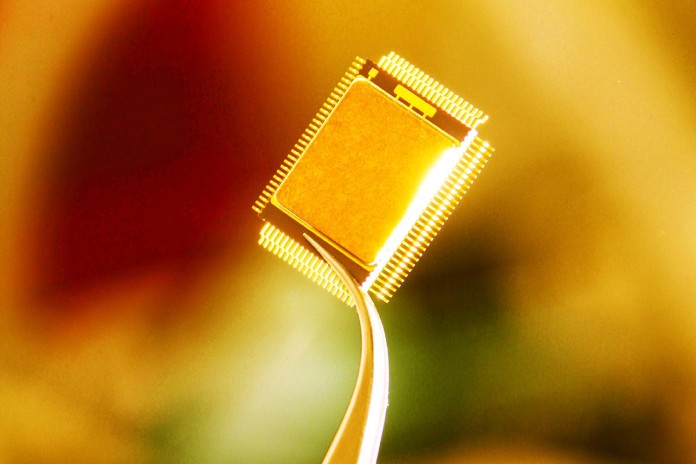
For the very first time, scientists have actually accomplished infinite rates on a light-bending microchip. Although this advance will not allow faster-than-light starships, the light-warping innovation behind this technology might bring about brand-new light-based microchips and also help make it possible for effective quantum computer systems, scientists said.
Light travels at the rate of about 670 million miles per hour in a vacuum, and also is theoretically the fastest possible rate at which matter or energy could go. Surpassing this speed limit ought to lead to impossible results such as time travel, according to Einstein’s theory of relativity.
To understand this feat, imagine a pulse of light as a package of waves all blended with each other. The energy of this package falls and rises across room, cresting somewhere in the middle. If a pulse of light meets a product that takes in, bends or scatters light, the waves making up this packet could disrupt each other, driving its crest ahead. This can make the speed at the package’s crest – known as the phase rate of the pulse– faster compared to light.
Light no much longer behaves as a collection of relocating waves zooming via area as a series of crests and troughs when what are recognized as zero-index materials get in the mix. Rather, in zero-index materials, light acts as either all crests or all troughs, stretched out to unlimited wavelengths and traveling at limitless rates.
The Theory of Relativity Survives in This Light-Bending Microchip
All these impacts do not make the power in a group pulse traveling faster than light, nonetheless, so the theory of relativity stays unbroken, the scientists claimed. These altered pulses likewise get more distorted the quicker they go, so it’s hard to send out helpful info at faster-than-light rates. Still, zero-index materials might have interesting applications when it involves controlling light, the scientists said. Simply as electronic gadgets can steer electrons around in circuits, photonic devices can adjust light.
The electrons in digital components are generally limited to dripping along at just a portion of the speed of light since electrons run into resistance in metal cords, which likewise results in lost power that fizzles away as warmth. Photonic devices would certainly not only operate much quicker, yet they would certainly likewise be cooler, meanings much more tools could be packed together in smaller, more effective computer systems.

Zero-Index Material Input Onto A Light-Bending Microchip
The scientists made a new metamaterial – a synthetic material whose structure is engineered to connect with and also control light in unique ways. The metamaterial includes selections of silicon columns embedded in a soft plastic and outfitted in reflective gold movie. This metamaterial permits you to bend and press light essentially immediately, to walk around very tight turns without losing signals and helping photonic circuits t happen. Zero-index products can likewise help hook up photonic integrated circuits to various other kinds of gadgets, such as fiber-optic networks, the researchers said.
This Light-Bending Microchip Help Develop Quantum Computers
Zero-index materials that could match on a chip might also assist advancement quantum computers, which can, in theory, carry out more computations in an instant compared to there are atoms in deep space. Quantum computers rely upon quantum entanglement, where two or more bits behave as if they are linked, despite the distance. By stretching wavelengths of light to unlimited lengths, zero-index products could possibly allow also far-off fragments to come to be entangled, said research co-author Philip Munoz, a graduate student in the Department of Engineering and Applied Sciences at Harvard University.

















